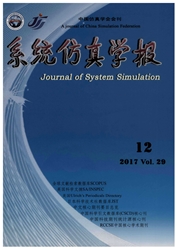

 中文摘要:
中文摘要:
空间聚类广泛用于传染病的监测、预防和控制。传染病与普通疾病在早期具有相似的症状,使得传染病数据处理和分析更为困难。采用基于Agent的仿真建模方法,生成北京暴发H1N1流感的仿真数据。基于4组分布形状与规模不同的数据,对2种空间聚类算法的疫情监测结果进行分析。结果表明,通过空间聚类算法对Agent仿真数据进行分析,有助于揭示疫情的扩散规律,进而在传染病监测和防控方面起到积极作用。
 英文摘要:
英文摘要:
Spatial cluster detection is widely used for disease surveillance, prevention and containment. In the early stages of illness, epidemics have similar symptoms to common diseases, making infectious disease data processing and analysis difficult. The Agent based modeling and simulation was used to generate H1N1 influenza data in Beijing. By designing a set of experiments, the epidemic monitoring results of two spatial clustering algorithms were analyzed. The results show that, using spatial clustering algorithms to analyze the simulation data of the epidemics can help to reveal the spread of the epidemic and play a positive role in the surveillance and prevention of infectious diseases.
 同期刊论文项目
同期刊论文项目
 同项目期刊论文
同项目期刊论文
 期刊信息
期刊信息
